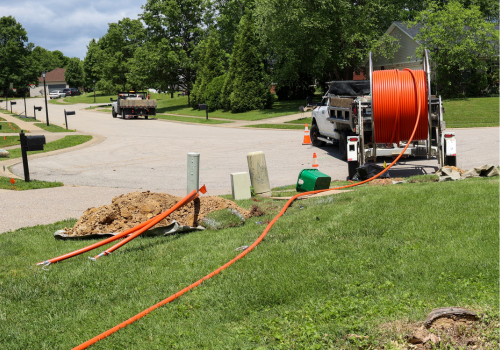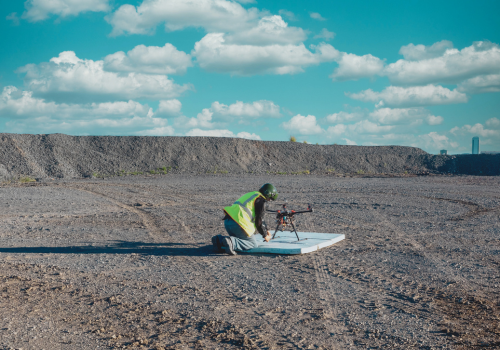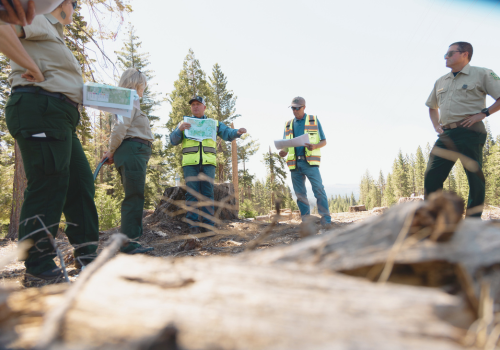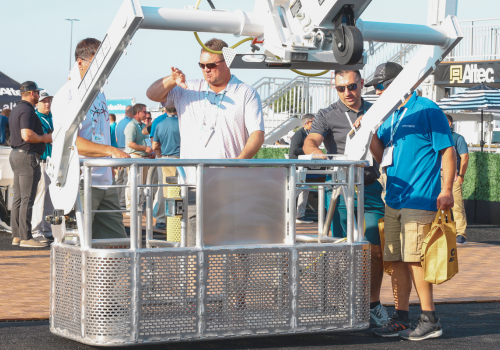We spoke with utility safety expert Monica Rakoczy of EnterTRAINING Solutions to round up some important safety tips for underground utility workers.
Utility locating
The OSHA 1926.651 standard on excavation requirements discusses the need to estimate the location of underground utility installations prior to opening an excavation. Contractors must contact the utility companies or owners of private installations, giving them at least 24 hours to respond—unless state or local requirements are more stringent.
Utility contractors need to understand the laws of the state they are working in. The Associated General Contractors of America has a handy utility infrastructure field guide on its website that can serve as a great resource.
“Utility contractors can also go directly to a state’s 811 website to get all the information they need,” Rakoczy points out. “Another great resource is the Common Ground Alliance, which provides some really good guidelines that all of the states base their rules on. Particularly with utility contractors that are growing and working in new states, the workers need to know where they are working and what the rules are.”
Workers also need to realize that, regardless of which state they are working in, 811 only covers public-owned utilities. There are a lot of privately owned utilities in places like business campuses, shopping centers, schools, mobile home parks, etc. “That puts the responsibility on the contractor to survey the jobsite and hire private locating companies to identify those privately owned utilities,” Rakoczy says.
It’s also a good idea for a utility contractor to ask the property owner for an as-built, which is designed to show where utilities were actually placed versus where the original drawings said they would be placed. “This will give you a really good idea of where utilities are anytime you go to dig,” Rakoczy says.
“The best tip I can offer is to trust your gut,” Rakoczy continues. “If something looks like it should be there but isn’t marked, trust your gut. Conversely, if lines are on the ground but don’t seem right, trust your gut. Not every locator is perfect. Never be afraid to call in and ask for verification if something doesn’t seem right.”
The OSHA 1926.651 standard also says that when an excavation is open, underground installations must be protected, supported, or removed as necessary to safeguard employees.
“You want to protect that utility from sag or the ability to break,” Rakoczy says. “A good rule of thumb when you’re supporting a utility is to support it from above. That could be a beam or pole stretched over the excavation, with strapping connected to the utility. That will help protect it from any accidental hits, as well as any gravity issues.”
Working in and around trenches
June is Trench Safety Month, a movement initiated by the National Utility Contractors Association in 2020. This ties in with the NUCA’s Trench Safety Stand Down Week, which coordinates numerous training activities across the industry.
Why all the fuss about trench safety? The National Institute for Safety & Health (NIOSH) says working in trenches is arguably the most dangerous aspect of an underground utility worker’s job. When trenches are not properly constructed and reinforced, walls can suddenly collapse. A little dirt can do a lot of damage, too. One square yard can weigh more than 3,000 pounds, which creates more than enough force to fatally crush and suffocate a utility worker.
“A lot of people don’t understand that the risk of a trench is more than just the digging of that trench,” Rakoczy says. Other risks include:
- Extra equipment that adds weight near the excavation
- Ground conditions
- Water level
- Rain or frost levels over the previous few days
OSHA’s 1926 standard, Subpart P, describes the precautions needed for safe excavation work. For instance, any trench that is at least 5 feet deep must incorporate one of the recommended protective systems. Additionally, a trench less than 5 feet deep must also incorporate a protective system if the dirt appears unstable. Those recommended protective systems include:
- Sloping the ground
- Benching the ground
- Shoring the trench with supports such as planking or hydraulic jacks
- Shielding the trench with a trench box
Trenches that are at least 20 feet deep need additional engineering measures.
Regardless, executing the required protective measures can’t happen without good planning before the excavation even begins.
“To keep workers safe, the most important thing you can ever put on a jobsite is a competent person,” Rakoczy says. That someone is very familiar with the inherent risks of trenching and excavation, as well as any additional factors that play into trench safety. It’s a legal requirement to have a competent person on the jobsite. But utility contractors can take it one step further.
“I think a lot of companies don’t truly understand what it takes to be competent,” Rakoczy says. “Training is a portion of that. But when you look at the definition of a competent person, this is a person who not only knows the standard itself but can also look at a situation and recognize what could be hazardous. That requires time and experience in the field.”
A competent person might be the jobsite foreman. But Rakoczy says a utility contractor should be careful about that. Sometimes a really good foreman doesn’t have the best grasp of safe excavation work. In many cases, excavator operators make great competent people.
“Excavator operators are the ones who are at the hole the whole time,” Rakoczy says. “They know how the dirt is moving and have the best vantage of the entire jobsite. I also think it’s important to have multiple competent people on a jobsite. Making sure your equipment operators are fully trained to be competent people, along with leadership, makes a lot of sense.”
Safety in confined spaces
Speaking of competent people, a new requirement requires a competent person for confined spaces. “So not only do the workers themselves need to be trained in confined-space procedures, but a competent person must also be on-site to identify and manage those confined spaces,” Rakoczy explains.
We’re talking about things like water utility manholes, subterranean utility vaults, pits, and tanks. Everyone on the site must understand that the top way to die in a confined space is through asphyxiation.
“You can’t see a lack of oxygen, and it’s human instinct to not fear what you can’t see,” Rakoczy says. “Something as simple as lowering a gas meter into a confined space can be life-saving. I don’t care how many times you’ve been in that confined space, always drop a meter before going in again.”
Subscribe to The Utility Expo monthly newsletter to receive more industry insights like this.












